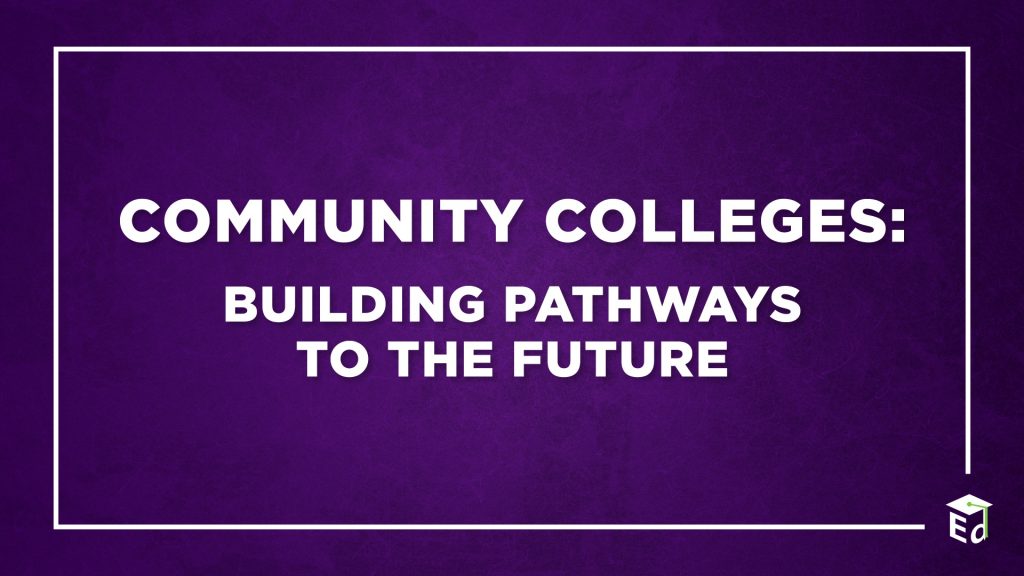[ad_1]

BY: Amy Loyd, ED.L.D., Assistant Secretary, OCTAE
The American postsecondary education system has seen many transformations, but none so democratic and revolutionary as the founding of the first community college in Joliet, Illinois in 1901. Then-president of the University of Chicago William Harper Rainey, and several other influential university presidents, were convinced that for America to grow and prosper, an accessible pathway was needed to open postsecondary education to all. As a result, community colleges were born.
In the 123 years since the founding of Joliet Junior College, the community college moment spread to encompass nearly every community in the nation, now numbering 1,022 colleges. Initially focused on creating education and training opportunities beyond high school, today’s community colleges span the gamut from high school dual enrollment to non-credit workforce training, industry certificates, registered apprenticeships, associate degrees—and in 24 states, now also baccalaureate degrees. During the 2020-21 school year, 8,871,746 students attended community colleges, representing about 43.7 percent of undergraduate student enrollment. Community college students also are among the more diverse in postsecondary education.
The Biden-Harris Administration knows that community colleges are critical partners in building the middle class, and through Investing in America, our Administration is seeking to further enable community colleges to be the engine that will transform our economy and future workforce in sustainable and renewable energy, semiconductor manufacturing, EVs and next-generation batteries, and a host of other industries. In short, community colleges are building pathways to the future.
I am proud to lead on behalf of community colleges here at the Department of Education, and to celebrate April as National Community College Month. Together with my colleagues in the Department, we have rededicated our efforts to serve the sector and to elevate the critical role our community colleges play. Since the Biden-Harris Administration took office in January 2021, the President, First Lady Dr. Jill Biden, Cabinet Secretaries, and other senior leaders have visited dozens and dozens of community colleges to see and experience firsthand the transformative power these institutions are unleashing for people of all ages throughout thousands of communities.
I have visited many community colleges during my tenure with the Department. One of the first was to Macomb Community College’s impressive M-TEC (Michigan Technical Education Center) in Warren, MI; with over forty thousand square feet of cutting-edge workforce development in integrated manufacturing, robotics, automated systems, and CAD—all leading to great jobs in in-demand fields. I also had the honor of attending Salish Kootenai College’s graduation in Pablo, MT; where we saw the power of a Tribal college to empower the future and advance Tribal sovereignty and self-determination through education, graduating students from certificate programs through associate’s, bachelor’s, and graduate degrees. And I was thrilled to visit Pima Community College in Tucson, AZ, to learn about their excellent Integrated Basic Education and Skills Training (IBEST) programs leading to rewarding careers for adult learners, and I participated in their NC3 signing day with hundreds of students, their family members, and business and industry leaders committing to and celebrating the rewarding career pathways that students are pursuing. From coast to coast, from rural to urban, I have seen countless examples of how our nation’s community colleges are transforming lives, building our workforce, and strengthening our communities.
Because of such visits and through meetings with community college leaders here at the Department, we are working diligently to elevate community colleges and facilitate their access to critical resources throughout the federal family. For instance, we are enhancing our information about Department of Education and other agency funding opportunities for community colleges. We will be curating and adding research and reports that capture the breadth, reach, and impact of community colleges to inform the public about the sector.
The Administration also continues its efforts around college affordability. We are working to spread tuition-free community college. We have called on Congress once again to approve our federal-state partnership plan for creating, expanding, and/or sustaining free community college tuition as part of the Administration’s Fiscal Year 2025 budget released on March 11th. Thirty-three states now offer free tuition programs, while local Promise programs have grown to over 425. We will showcase examples of statewide programs to help inform policymakers and educational leaders about the scope and variety of approaches to advance college affordability and access to career and technical education pathways for high school graduates.
We also are working to address student needs – mental health, access to SNAP, Medicaid, and other supports – and to advance Secretary Cardona’s Raise the Bar: Lead the World strategy and vision. OCTAE launched its Unlocking Career Success initiative last year, with four national convenings held in community colleges across the country. In support of Unlocking Career Success, we announced the first 19 grantees for our new Career-Connected High Schools, which center community colleges as core partners and leaders for transforming education. This grant program is seeking to blur the lines and integrate pathways between high schools, community colleges, and high-growth, high-wage careers.
In observance of National Community College Month, we will post additional blogs from a community college leader and a student whose career has been transformed through their college. We invite you to celebrate with us by uplifting your experiences and connections to community colleges. Together, we can elevate the work of these institutions as they continue to transform our nation and provide powerful pathways to the future.
[ad_2]



